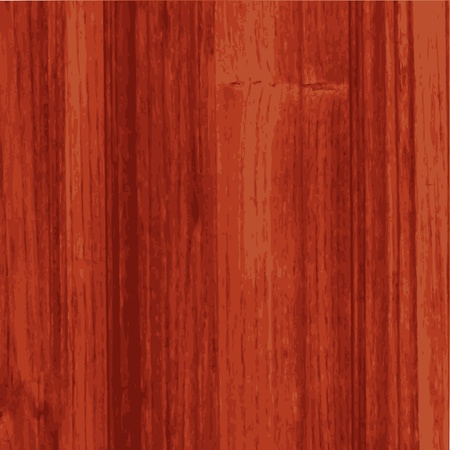Understanding Texture in British Interiors
Texture is more than just a tactile experience; it’s an essential element that shapes the atmosphere and emotional resonance of any interior. In British homes and public spaces, texture often weaves together heritage, practicality, and understated elegance. Whether it’s the warmth of oak panelling in a Victorian townhouse, the cool solidity of granite in a city café, or the industrial chic of exposed steel in converted warehouses, each material brings its own psychological undertones. The British approach to texture balances tradition with innovation, blending old-world charm with contemporary sensibilities. This nuanced interplay not only creates visual interest but also influences how inhabitants and visitors feel within a space—inviting comfort, fostering connection, or even inspiring awe. Understanding these textural choices is key to appreciating the unique character of interiors across the UK.
Wood: Warmth, Heritage, and Timeless Comfort
Few materials evoke a sense of home quite like wood. Its tactile richness and organic warmth are deeply woven into the fabric of British architectural heritage. From the rough-hewn beams of a Cotswold cottage to the polished oak floors of a Georgian townhouse, wooden textures speak to centuries of craftsmanship and comfort. The psychology behind wood’s enduring appeal is rooted in both sensory experience and cultural memory.
The Emotional Resonance of Wooden Textures
Wooden surfaces offer a unique blend of familiarity and security. In British interiors, they often conjure images of gathering around a crackling fire or sharing a meal at a sturdy farmhouse table. This sense of conviviality isn’t merely nostalgia; research suggests that natural materials like wood can reduce stress, promote relaxation, and foster social connection.
Wood in British Spaces: A Cultural Tapestry
Historically, wood has been central to British homes, evolving from medieval timber frames to the refined panelling of Regency drawing rooms. Each style imparts its own psychological undertones:
| Period | Texture | Emotional Effect | Cultural Reference |
|---|---|---|---|
| Tudor | Exposed beams, rough-hewn oak | Security, tradition | Cottage cosiness, folk memory |
| Georgian | Smooth panelling, polished mahogany | Sophistication, calm order | Townhouse elegance, Enlightenment values |
| Victorian | Carved details, dark stains | Opulence, intimacy | Bespoke craftsmanship, family legacy |
Sensory Qualities and Wellbeing
The grainy irregularities of wood invite touch—unlike colder or more clinical materials. This tactile comfort is amplified by subtle scents and shifting hues that change with light. In contemporary British design, incorporating reclaimed floorboards or bespoke joinery isn’t just an aesthetic choice but an investment in psychological wellbeing. Ultimately, wood’s presence within a space nurtures a feeling of being grounded—a quiet assurance that endures across generations.

3. Metal: Urban Modernity Meets Industrial Charm
Within the British interior landscape, metal has long played a multifaceted role, bridging the gap between industrial heritage and cutting-edge modernity. The psychology of metal textures is nuanced: they can both invigorate a space with urban dynamism and introduce a sense of refined sophistication. Consider the enduring presence of Victorian cast iron—ornate yet weighty, it brings a robust, almost nostalgic energy to period homes and public spaces alike. These tactile ironwork details, from balustrades to fireplaces, evoke an era of engineering prowess and solidity, subtly reinforcing feelings of stability and permanence.
Contrast this with the clean lines and polished surfaces of contemporary steel or brushed aluminium that populate today’s loft apartments and office spaces in London’s regenerated docklands. Here, cool metallic finishes cultivate a sense of sleek efficiency and understated luxury; their smoothness under the hand feels reassuringly modern, even clinical. Yet, when paired with exposed brick or reclaimed timber—a nod to Britain’s industrial past—the effect is softened, resulting in a compelling interplay between old and new.
The versatility of metal extends beyond mere finish. Hammered copper accents or patinated brass fixtures lend warmth and character to kitchens and bathrooms, their tactile irregularities inviting touch while catching the light in unexpected ways. In essence, metal’s psychological impact depends on its treatment: matte black steel radiates urban edge and discipline; polished chrome offers clarity and precision; antiqued metals suggest stories and lived experience. Whether used sparingly as statement hardware or expansively in structural elements, metal textures infuse British interiors with energy—sometimes coolly detached, sometimes irresistibly charismatic—always shaping our perceptions of space through their unique blend of urbanity and artisanal heritage.
4. Stone: Earthy Grounding and Enduring Resilience
Stone has long been woven into the fabric of British architecture, its tactile solidity offering both a literal and psychological foundation to homes and public spaces alike. The very presence of stone—whether as the rugged exterior of a Lake District cottage or the time-worn flagstones underfoot in an old Cotswolds kitchen—evokes a sense of permanence, stability, and deep-rooted connection to the land. This grounding quality is intrinsic to the British appreciation of stone textures; they remind us that our built environment is anchored in history and nature.
In terms of psychological impact, stone surfaces are often perceived as calming due to their cool touch and muted hues. Their inherent weightiness brings a reassuring sense of security. This effect is particularly pronounced in classic British interiors, where thick stone walls muffle external noise, creating tranquil sanctuaries from the bustle outside. Flagstone floors, meanwhile, combine practicality with understated elegance, their irregular surfaces inviting us to slow down and appreciate the passage of time etched into every slab.
Classic Uses of Stone in British Interiors
| Stone Element | Traditional Use | Psychological Effect |
|---|---|---|
| Flagstone Flooring | Kitchens, hallways, garden rooms | Grounding, timelessness, durability |
| Exposed Stone Walls | Cottages, fireplaces, feature walls | Security, warmth (visually), historic charm |
| Stone Hearths/Mantels | Sitting rooms, drawing rooms | Comfort, gathering point, tradition |
The Enduring Appeal: More Than Just Aesthetic Value
The enduring appeal of stone lies not only in its robustness but also in its ability to foster a meditative atmosphere. In the British context, where weather can be unpredictable and grey skies commonplace, interiors built with or accented by stone create an inner sanctuary—a place to feel steady when everything else may seem in flux. There’s a tactile honesty to stone; it doesn’t pretend to be anything other than what it is. This authenticity resonates deeply within a culture that values understatement and longevity over fleeting trends.
Cultural Resonance and Contemporary Adaptation
Modern British design continues to draw inspiration from traditional uses of stone. Whether through reclaimed Yorkstone slabs or contemporary limestone tiles, designers leverage the grounding psychology of this material to cultivate interiors that feel both rooted and restful. In open-plan living spaces or converted barns, exposed stone walls offer texture without overwhelming visual noise—a subtle reminder of Britain’s geological and architectural heritage.
Summary Table: Psychological Qualities of Stone Textures in British Spaces
| Quality | Description | Cultural Significance (UK) |
|---|---|---|
| Permanence | A sense of lasting strength and reliability | Reflects historical continuity and respect for tradition |
| Calmness | Mutes acoustics; cool touch soothes senses | A retreat from chaotic modern life; echoes rural tranquillity |
| Simplicity & Honesty | Naturally unembellished surface texture | An aesthetic aligned with understated British taste and authenticity |
| Connection to Nature | Mined locally; retains natural patterns and colours | Ties home environments back to regional landscapes and geology |
In sum, incorporating stone into interior design isn’t merely about replicating a rustic look—it’s about inviting resilience, calmness, and an enduring sense of belonging into our most personal spaces.
5. Layering Textures: Crafting Personality Through Contrast
There is a distinctively British sensibility when it comes to layering textures within an interior—a subtle artistry that lies in the thoughtful juxtaposition of wood, metal, and stone. Rather than seeking seamless uniformity, British interiors revel in contrast, using a clever blend of materials to evoke both character and comfort. This approach is not simply aesthetic; it is deeply psychological, rooted in a desire to tell a story through the tactile qualities of each element.
The Art of Juxtaposition
In the UK, one often finds Victorian mahogany panelling paired with sleek industrial steel fixtures or an Edwardian hearth framed by cool slate and warm oak beams. This interplay isnt accidental—it reflects a cultural appreciation for heritage and modernity coexisting side by side. The result is an interior that feels lived-in yet refreshed, grounded yet daringly eclectic.
Wood: The Anchor of Warmth
Wood serves as the anchor in many British spaces, its grain and finish offering familiarity and warmth. Against this backdrop, metal and stone become accents that introduce tension and intrigue. Think of a reclaimed timber dining table flanked by brushed aluminium chairs or polished granite worktops resting atop painted wooden cabinets—each combination engages the senses differently.
Stone and Metal: Striking a Delicate Balance
Stone’s natural solidity can temper the shine and coolness of metal, just as metals engineered precision can highlight the organic irregularities of stone. In period homes or converted warehouses alike, layering these textures creates a visual rhythm that draws the eye around the room and invites touch. The psychology here is clear: contrast fosters curiosity and engagement, making each space feel uniquely personal while also distinctly British.
6. Wellbeing and Texture: A Sensory Approach to Home Life
When it comes to crafting a home that truly nurtures our wellbeing, the textures we choose are more than a matter of style—they shape the very essence of comfort and calm. In the UK, where the unpredictable weather often drives us indoors, our living spaces become sanctuaries for both body and mind. It’s here that tactile elements such as wood, metal, and stone come into play, each offering distinct psychological benefits that influence our everyday mood and sense of ease.
Wood: Warmth and Hygge-Inspired Cosiness
Wooden surfaces evoke an immediate sense of warmth and familiarity, embodying the Scandinavian concept of hygge that has found a welcoming home in British interiors. Whether it’s the smooth grain of an oak dining table or the rustic charm of exposed beams, wood wraps us in an atmosphere of comfort—perfect for curling up with a cuppa on a rainy day. This tactile cosiness fosters relaxation and helps reduce stress, turning ordinary rooms into restorative retreats.
Stone: Stability and Connection to Nature
Stone, with its cool solidity, grounds a space both visually and physically. Incorporating natural stone elements—be it a slate hearth or limestone flooring—draws upon principles of biophilic design, which emphasise our innate connection to nature. These textures invite us to slow down and savour the moment, their timeless presence lending a reassuring sense of permanence amidst modern life’s bustle.
Metal: Modernity with a Delicate Edge
In contrast, metal introduces a contemporary edge to interiors—think brushed brass handles or steel light fixtures. While metal is often perceived as cold, clever use can add sophistication without sacrificing comfort. Pairing metallic accents with softer textures balances sleekness with approachability, ensuring spaces remain inviting rather than austere.
Sensory Balance for Everyday Comfort
The magic lies in the interplay between these materials. Combining wood’s warmth with stone’s grounding influence and metal’s clean lines creates sensory harmony—a British approach that values both tradition and innovation. By consciously selecting textures that resonate with our emotional needs, we craft homes that support mental wellbeing as much as aesthetic pleasure.
A Textured Path to Wellbeing
Ultimately, the psychology of texture reminds us that how our homes feel is just as important as how they look. Embracing tactile variety—guided by local sensibilities like hygge-inspired snugness and biophilic principles—can transform domestic life, nurturing a sense of security, contentment, and belonging at the heart of British home culture.

